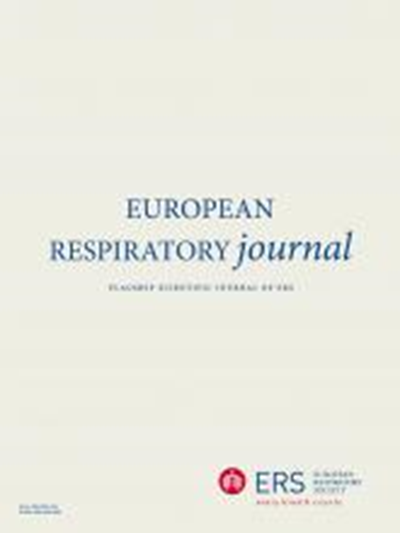心肺运动试验对肺动脉高压的预后价值。
IF 16.6
1区 医学
Q1 RESPIRATORY SYSTEM
引用次数: 0
摘要
背景:目前的指南推荐基于世界卫生组织功能分类(WHO-FC)、6分钟步行距离(6MWD)和血清脑利钠肽(BNP)或n端前BNP (NT-proBNP)水平的四层模型,用于肺动脉高压(PAH)患者随访期间的风险分层。我们探讨了在PAH治疗开始后首次重新评估时使用心肺运动试验(CPET)作为运动参数代替6MWD的相关性。方法对2010年至2022年期间发生的特发性、遗传性、药物/毒素诱导和结缔组织病相关PAH的treatment-naïve患者进行分析。探讨CPET与血流动力学和右心室(RV)功能参数的相关性,并将具有显著意义的参数继续进行评估与生存的相关性。使用独立预测因子得出四层CPET评分。结果共纳入262例患者。CPET参数与血流动力学和RV功能的相关性优于6MWD。CPET评分包括峰值摄氧量(峰值VO2)、通风与二氧化碳产生的斜率(VE/VCO2斜率)和峰值氧脉冲。基于WHO-FC、BNP和CPET评分的四层模型预测第一次重新评估时的生存,比包含6MWD的模型更准确(c指数0.81比0.71)。CPET分数本身也表现良好(c指数0.82),类别之间的差距更大。治疗相关的峰值VO2和氧脉冲的变化预测生存,而6MWD的变化不能预测生存。结论简化的四层CPET评分单独或与BNP和WHO-FC合并可准确预测PAH随访时的生存。本文章由计算机程序翻译,如有差异,请以英文原文为准。
Prognostic value of cardiopulmonary exercise testing in pulmonary arterial hypertension.
BACKGROUND
Current guidelines recommend a four-strata model based on World Health Organization functional class (WHO-FC), 6-min walk distance (6MWD), and serum levels of brain natriuretic peptide (BNP) or N-terminal pro-BNP (NT-proBNP) for risk stratification in patients with pulmonary arterial hypertension (PAH) during follow-up. We explored the relevance of using cardiopulmonary exercise testing (CPET) as the exercise parameter in place of 6MWD at first reassessment after treatment initiation in PAH.
METHODS
Incident treatment-naïve patients with idiopathic, heritable, drug/toxins-induced, and connective tissue disease-associated PAH between 2010 and 2022 were analysed. Correlations between CPET and haemodynamic and right ventricular (RV) function parameters were explored and those which were significant were carried forward to assess association with survival. Independent predictors were used to derive a four-strata CPET score.
RESULTS
262 patients were included. CPET parameters showed better correlations with haemodynamics and RV function than 6MWD. The CPET score included peak oxygen uptake (peak VO2), the slope relating ventilation to carbon dioxide production (VE/VCO2 slope), and peak oxygen pulse. The four-strata model based on WHO-FC, BNP, and CPET score predicted survival at the time of the first re-evaluation, with better accuracy than the model including 6MWD (c-index 0.81 versus 0.71). The CPET score on its own also performed well (c-index 0.82) with a greater spread between categories. Treatment-associated changes in peak VO2 and oxygen pulse predicted survival, while changes in 6MWD did not.
CONCLUSIONS
A simplified four-strata CPET score either alone or included with BNP and WHO-FC accurately predicts survival at follow-up in PAH.
求助全文
通过发布文献求助,成功后即可免费获取论文全文。
去求助
来源期刊

European Respiratory Journal
医学-呼吸系统
CiteScore
27.50
自引率
3.30%
发文量
345
审稿时长
2-4 weeks
期刊介绍:
The European Respiratory Journal (ERJ) is the flagship journal of the European Respiratory Society. It has a current impact factor of 24.9. The journal covers various aspects of adult and paediatric respiratory medicine, including cell biology, epidemiology, immunology, oncology, pathophysiology, imaging, occupational medicine, intensive care, sleep medicine, and thoracic surgery. In addition to original research material, the ERJ publishes editorial commentaries, reviews, short research letters, and correspondence to the editor. The articles are published continuously and collected into 12 monthly issues in two volumes per year.
 求助内容:
求助内容: 应助结果提醒方式:
应助结果提醒方式:


